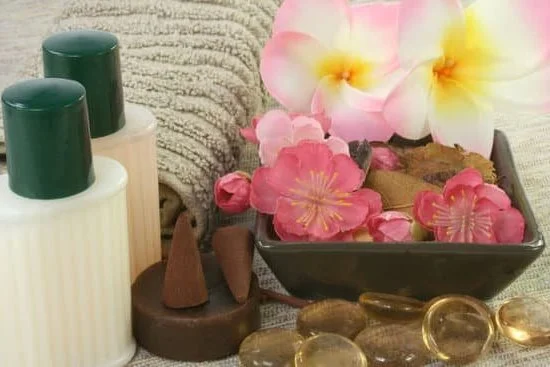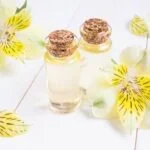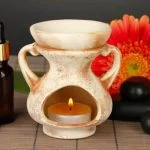Introducing the concept of aromatherapy and its rising popularity, this article will delve into the origins, science, applications, and future trends of this ancient practice. Aromatherapy has gained significant traction in recent years as people seek natural and holistic methods for promoting physical and mental well-being. In this section, we will discuss the fascinating connection between aromatherapy and Honestly Margo Price, a key figure in the industry.
Aromatherapy, also known as essential oil therapy, is the use of aromatic compounds from plants to encourage healing and enhance overall wellness. This practice dates back thousands of years and has been embraced by cultures around the world. From ancient Egypt to China to Greece, people have recognized the powerful effects that scents can have on the body and mind.
In her journey towards personal wellness, Honestly Margo Price discovered the transformative power of aromatherapy. With a deep passion for natural healing methods, she immersed herself in this world and became an influential advocate for its benefits. Margo Price’s involvement in product development and educational initiatives has brought aromatherapy to a wider audience.
As we explore the various aspects of aromatherapy in this article, keep in mind its connection with Honestly Margo Price and her dedication to promoting holistic well-being through natural means.
The Origins of Aromatherapy
Aromatherapy has a rich history that dates back centuries and is deeply rooted in various cultures around the world. The ancient practice of aromatherapy was originally used for medicinal and therapeutic purposes, making it an integral part of traditional healing practices. This section will explore the origins of aromatherapy, tracing its roots through different cultures and civilizations.
One of the earliest recorded uses of aromatherapy can be traced back to ancient Egypt, where essential oils were utilized in religious rituals, embalming, and beauty treatments. The Egyptians believed that scents had the power to connect with the divine and evoke certain emotions. They were known to use essential oils such as frankincense, myrrh, and cedarwood for their healing properties.
In addition to Egypt, many other ancient civilizations incorporated aromatic plants and oils into their practices. In China, aromatics were used in a technique called “incense therapy” as part of traditional medicine. Indian Ayurvedic medicine also utilized aromatic herbs and oils for their healing properties. The Greeks and Romans also made extensive use of essential oils for both medicinal purposes and personal hygiene.
As time went on, the use of aromatherapy spread throughout Europe during the Middle Ages with the rise of herbal medicine. However, it wasn’t until the 20th century that modern aromatherapy emerged as a distinct field. French chemist René-Maurice Gattefossé coined the term “aromatherapie” after he discovered the healing benefits of lavender oil when he applied it to his burn wounds.
Today, aromatherapy has gained widespread popularity as a complementary therapy in wellness practices worldwide. It seamlessly combines ancient wisdom with modern science to enhance physical and mental well-being. With its historical significance and growing body of research supporting its efficacy, aromatherapy continues to be embraced by individuals seeking natural alternatives for promoting health and relaxation.
| Ancient Civilization | Use of Aromatherapy |
|---|---|
| Egypt | – Used essential oils in religious rituals, embalming, and beauty treatments |
| China | – Utilized aromatics in “incense therapy” as part of traditional medicine |
| India (Ayurvedic Medicine) | – Incorporated aromatic herbs and oils for their healing properties |
| Greece and Rome | – Made extensive use of essential oils for medicinal purposes and personal hygiene |
The Science behind Aromatherapy
Aromatherapy may seem like a mystical practice, but there is actually a scientific basis behind its effectiveness. The key to understanding the science of aromatherapy lies in the interaction between essential oils and the body.
Essential oils, which are derived from plants through processes like distillation or cold-pressing, contain concentrated compounds that give them their distinct aromas. These compounds interact with the senses and can have various effects on the body and mind.
When inhaled, essential oils stimulate olfactory receptors in the nose, sending signals to the limbic system in the brain. This part of the brain is responsible for regulating emotions, memory, and behavior. As a result, inhaling specific essential oils can trigger different emotional and physiological responses.
In addition to their impact on emotions, essential oils also have direct physical effects on the body. Some compounds found in certain essential oils have antibacterial or antifungal properties, while others have been shown to have anti-inflammatory or analgesic effects. By applying essential oils topically (with proper dilution) or using them in massage therapy, these therapeutic properties can be harnessed to support physical well-being.
The potential benefits of aromatherapy extend beyond just relaxation; several studies have suggested positive effects on sleep quality, stress reduction, pain relief, and overall mood improvement. However, it’s important to note that individual experiences may vary due to factors like personal preferences and physiological differences.
To reap the full benefits of aromatherapy, it is crucial to choose high-quality essential oils and use them properly. When selecting essential oils for specific purposes, it’s important to consider their chemical composition and potential therapeutic properties. For example:
- Lavender oil is known for its calming properties and can be used for relaxation and sleep.
- Peppermint oil has invigorating properties that can help improve focus and relieve headaches.
- Eucalyptus oil is commonly used for respiratory support due to its expectorant and decongestant effects.
To use essential oils safely, they should typically be diluted with a carrier oil before applying them directly to the skin. This helps prevent irritation and sensitization. When using essential oils in diffusers, follow the manufacturer’s instructions and limit exposure to avoid overexposure.
Aromatherapy combines ancient wisdom with scientific principles to offer a holistic approach to well-being. By understanding the science behind aromatherapy, individuals can make informed choices about incorporating it into their wellness routines. With Honestly Margo Price’s involvement in the industry, there is now greater accessibility and education around aromatherapy for those interested in exploring its potential benefits.
Honestly Margo Price and Aromatherapy
Honestly Margo Price, a well-known artist in the music industry, has not only made her mark in the world of music but also in the field of aromatherapy. Margo Price’s journey with aromatherapy began as a personal exploration of natural healing methods and has since evolved into her passionate involvement in the industry. Her contributions to aromatherapy have included product development and educational initiatives, making a significant impact on the wellness community.
Through her personal experiences with aromatherapy, Margo Price discovered the power of essential oils and their positive effects on physical and mental well-being. This prompted her to develop her own line of aromatherapy products that prioritize quality, sustainability, and ethical sourcing. With a deep respect for nature and its healing abilities, Margo Price’s brand embodies her values by using organic ingredients and recyclable packaging.
Beyond product development, Margo Price is dedicated to educating others about the benefits of aromatherapy. She believes in empowering individuals to take control of their well-being through natural means. Through workshops, online resources, and partnerships with holistic practitioners, she strives to provide accessible information on incorporating aromatherapy into daily life.
Margo Price’s involvement in aromatherapy continues to inspire many individuals seeking natural alternatives for self-care. By combining her passion for music with her dedication to holistic practices, she has become an influential figure in promoting a more mindful approach to wellness. Whether through soothing scents or uplifting music, Honestly Margo Price encourages individuals to connect to their senses and embrace the therapeutic power of aromatherapy.
Popular Essential Oils for Aromatherapy
Aromatherapy has gained significant popularity in recent years, with many people turning to essential oils as a natural and holistic approach to well-being. Essential oils are concentrated plant extracts that have been used for centuries in different cultures for their potential therapeutic effects. From promoting relaxation and reducing stress to aiding in physical ailments, essential oils offer a wide range of benefits. In this section, we will explore some popular essential oils used in aromatherapy and their specific benefits.
| Essential Oil | Benefits |
|---|---|
| Lavender | Promotes relaxation, reduces anxiety and stress, aids in sleep |
| Peppermint | Boosts energy and focus, relieves headaches, eases digestion issues |
| Tea Tree | Has antiseptic properties, helps with acne and skin infections |
Lavender is one of the most widely used essential oils for its calming properties. It has been shown to promote relaxation, reduce anxiety and stress levels, and aid in sleep quality. Peppermint essential oil is known for its invigorating scent that can boost energy and improve focus.
It also provides relief from headaches and aids digestion by soothing indigestion or nausea. Tea tree oil is another popular choice due to its antiseptic qualities. It can be applied topically to help treat acne or various skin infections.
While these are just a few examples of popular essential oils used in aromatherapy, there is a wide variety available each with its own unique benefits. It’s important to note that individual experiences may vary, so it’s recommended to experiment and find the essential oils that work best for you. When purchasing essential oils, it’s crucial to choose high-quality, pure oils from trusted sources to ensure their effectiveness.
Proper usage of essential oils is also essential for a satisfying aromatherapy experience. Essential oils can be used in various ways, such as through diffusers, baths, or massages. Choosing the right method depends on personal preference and the desired benefits. It’s also important to dilute essential oils properly and follow safety guidelines to avoid any adverse reactions.
Aromatherapy Techniques and Applications
When it comes to experiencing the benefits of aromatherapy, there are various techniques and applications that can be used to incorporate essential oils into your daily routine. These methods allow for easy diffusion and absorption of the oils, maximizing their therapeutic effects. Here are some popular techniques for enjoying aromatherapy:
- Diffusers: A diffuser is one of the most commonly used tools for aromatherapy. It disperses essential oils into the air, creating a pleasant and soothing atmosphere. There are different types of diffusers available, including ultrasonic diffusers, nebulizers, and heat-based diffusers. Choose the one that suits your needs and preferences.
- Baths: Adding a few drops of essential oil to your bathwater can create a luxurious and relaxing experience. The warm water helps to release the aromatic compounds from the oil, allowing you to inhale them while also benefiting from their absorption through your skin. Popular essential oils for baths include lavender, eucalyptus, chamomile, and rosemary.
- Massages: Aromatherapy massages combine the benefits of touch therapy with the healing properties of essential oils. When diluted with a carrier oil such as jojoba or coconut oil, essential oils can be applied directly to the skin during a massage session. This allows for both topical absorption and inhalation of the aromatic molecules.
Incorporating aromatherapy into your daily routine is quite simple once you have selected the appropriate technique for your needs. Whether you want to create a calming ambiance in your home or enhance your well-being through self-care practices, these techniques provide versatile options for enjoying aromatherapy.
To ensure a satisfying experience with aromatherapy, it is important to choose high-quality essential oils that are pure and free from synthetic additives or dilutions. Always follow recommended dilution ratios and safety guidelines when using essential oils topically or internally. Additionally, it is advisable to perform a patch test before applying any essential oil to your skin, especially if you have sensitive skin or allergies.
Remember that aromatherapy is a complementary therapy and should not be viewed as a substitute for professional medical advice. If you have any underlying health conditions or are pregnant, consult with a healthcare professional before incorporating aromatherapy into your routine.
In the next section, we will discuss popular essential oils for aromatherapy and their specific benefits, helping you choose the ideal oils for your needs.
Potential Risks and Precautions
Potential Side Effects and Contraindications
While aromatherapy offers many potential benefits, it is important to be aware of the potential risks and precautions associated with this practice. Although essential oils are generally safe to use when used properly, they can cause adverse effects in some individuals. It is crucial to be aware of any sensitivities or allergic reactions you may have before using essential oils.
Some common side effects that have been reported include skin irritation, allergies, headaches, and respiratory issues. Certain essential oils can also have phototoxic properties, meaning they can cause increased sensitivity to sunlight and lead to sunburn or skin damage. It is important to avoid direct sunlight or UV exposure after applying these oils topically.
It is also worth noting that certain individuals may be more prone to adverse effects from aromatherapy, such as those with respiratory conditions like asthma or chronic obstructive pulmonary disease (COPD). Pregnant women should exercise caution when using essential oils as they can potentially affect hormone levels and have an impact on fetal development.
Safety Guidelines and Precautions
To ensure a safe and enjoyable aromatherapy experience, it is recommended to follow these safety guidelines:
- Dilute Essential Oils: Most essential oils should always be diluted before application because their concentrated form can be too strong for direct use on the skin. Carrier oils like coconut oil or almond oil are commonly used for dilution.
- Patch Test: Before applying any new essential oil topically, perform a patch test by applying a small amount of diluted oil on your forearm and wait for 24 hours to check for any negative reactions.
- Follow Usage Recommendations: Each essential oil has its own specific usage recommendations based on its potency and intended purpose. Always refer to the guidance provided by reputable sources or consult with a certified aromatherapist.
- Store Properly: Essential oils should be stored in a cool, dry place away from direct sunlight to extend their shelf life and maintain their potency.
- Avoid Ingestion: While ingesting essential oils is a topic of debate among aromatherapy experts, it is generally recommended to avoid oral consumption unless under the guidance of a qualified professional.
- Consult a Healthcare Professional: If you have any underlying medical conditions or are currently taking medications, it is advisable to consult with your healthcare provider before incorporating aromatherapy into your routine.
By following these precautions and consulting with professionals when necessary, you can safely enjoy the benefits of aromatherapy while minimizing any potential risks associated with its use. Remember that everyone’s body is unique, so what works well for one person may not work the same for another. It is always important to listen to your body and make informed decisions when using essential oils.
Future Trends and Innovations in Aromatherapy
Advancements in Essential Oil Blends
As the field of aromatherapy continues to grow, there are constant advancements being made in the development of new essential oil blends. With a better understanding of the therapeutic properties of different oils, experts are creating unique combinations that target specific concerns. For example, blends that promote relaxation and stress relief, blends for boosting immunity, or blends for enhancing focus and concentration. These customized essential oil blends allow individuals to personalize their aromatherapy experience and address their specific needs.
New Delivery Methods
In addition to exploring new essential oil blends, researchers and innovators are also looking into new delivery methods for aromatherapy. Traditionally, diffusers and topical applications have been the primary ways to enjoy the benefits of essential oils. However, advancements in technology have opened up new possibilities.
For instance, nasal inhalers are becoming increasingly popular due to their convenience and portability. These devices allow users to easily inhale the aroma directly from a concentrated blend, providing a quick and effective way to experience the therapeutic effects of aromatherapy on-the-go.
The Rise of Aromatherapy Subscription Boxes
A recent trend in the aromatherapy industry is the emergence of subscription boxes specifically curated for aromatic enthusiasts. These subscription services offer monthly or quarterly deliveries of carefully selected essential oils and related products, allowing individuals to explore a variety of scents while discovering new ways to incorporate them into their wellness routines.
Subscription boxes often include educational materials such as usage guides or recipe booklets for blending different oils together effectively. This trend not only brings convenience but also serves as an opportunity for individuals to continuously learn about aromatherapy and expand their collection of essential oils.
The future of aromatherapy holds exciting possibilities with advancements in essential oil blends, delivery methods, and subscription box services. These innovations provide individuals with more options to customize their aromatherapy experience and cater to their specific needs.
As the market continues to evolve, it is important for consumers to stay informed about these developments and make educated choices when selecting products and techniques. With the support of passionate advocates like Honestly Margo Price, who have dedicated themselves to natural healing methods, aromatherapy is set to flourish and make a lasting impact on the wellness industry.
Conclusion
In conclusion, aromatherapy is a time-honored practice that has gained significant popularity in recent years. Throughout history, aromatherapy has been utilized by various cultures for its therapeutic benefits and connection to overall well-being. Today, modern science has shed light on the mechanisms behind aromatherapy, explaining how essential oils interact with the body to promote physical and mental health.
One individual who has embraced the power of aromatherapy is Honestly Margo Price. Inspired by her personal journey with natural healing methods, she has become an influential figure in the industry. Price’s passion for aromatherapy has led her to contribute extensively through product development and educational initiatives, spreading awareness about its efficacy and importance in holistic wellness practices.
When it comes to incorporating aromatherapy into daily routines, there are several popular essential oils with specific benefits to consider. It is crucial to choose high-quality oils and follow proper usage guidelines for a safe and satisfying experience. The different techniques and applications of aromatherapy, such as diffusers, baths, and massages, provide various options for individuals seeking to incorporate this practice into their self-care routines.
Despite its many benefits, it is vital to be aware of potential risks and precautions when utilizing essential oils for aromatherapy. Some individuals may experience side effects or have contraindications that should be taken into consideration. By following safety guidelines and consulting with professionals if necessary, individuals can minimize potential risks while reaping the health-enhancing benefits of this ancient practice.
Looking ahead, there are exciting prospects for the future of aromatherapy. Advancements in essential oil blends and delivery methods continue to emerge, catering to the evolving needs of consumers seeking natural approaches to well-being. As Honestly Margo Price continues her involvement in furthering aromatherapy’s reach and impact on the wellness industry, one can expect ongoing innovation that will shape the future of this age-old practice.
Overall, aromatherapy provides a holistic and natural approach to enhancing well-being. Its ancient roots, scientific principles, and potential benefits make it not only intriguing but also highly relevant in today’s fast-paced world. With Honestly Margo Price’s involvement and the growing interest in natural healing methods, aromatherapy is poised to become even more prominent as individuals seek effective, safe, and sustainable approaches to wellness.
Frequently Asked Questions
What is energy balm?
Energy balm is a type of topical product that is specifically designed to provide a boost of energy and revitalization. It typically comes in the form of a solid or semi-solid substance, often contained in a container like a tin or tube.
Energy balms are made with various ingredients, such as essential oils and natural extracts, which are believed to have stimulating and invigorating properties. The balm is usually applied to specific areas of the body, such as the temples, wrists, or chest.
What does balm do to the body?
When applied to the body, balm has several effects. The primary purpose of balms is to moisturize and nourish the skin. They often contain ingredients like shea butter or beeswax that create a protective barrier and help lock in moisture.
Additionally, balms can have a warming or cooling sensation on the skin depending on their formulation and intended use. This can help soothe tired muscles or provide relief from discomfort. Some balms also have aromatic properties that offer relaxation or invigoration when inhaled.
What is aromatherapy balm used for?
Aromatherapy balm is specifically used for its therapeutic benefits related to scent and mood enhancement. Aromatherapy itself involves using essential oils derived from plants for their potential healing properties, whether physical or emotional. Aromatherapy balms are formulated with specific essential oils known for their mood-altering qualities, such as lavender for relaxation or citrus scents for uplifting effects.
These balms can be applied to pulse points or simply inhaled directly from the container. The idea behind using an aromatherapy balm is to promote feelings of calmness, clarity, focus, or other desired emotional states through scent stimulation.

Are you looking for a natural way to improve your health and wellbeing?
If so, aromatherapy may be the answer for you.




